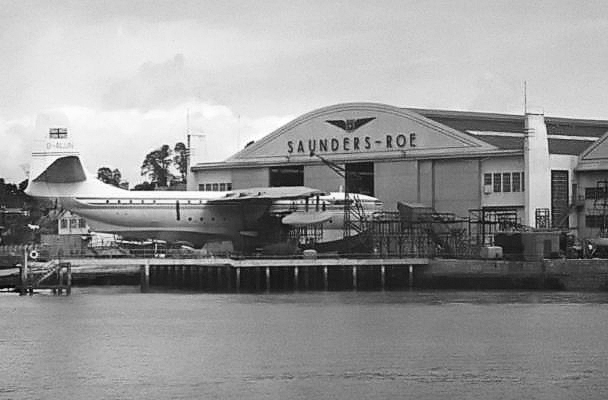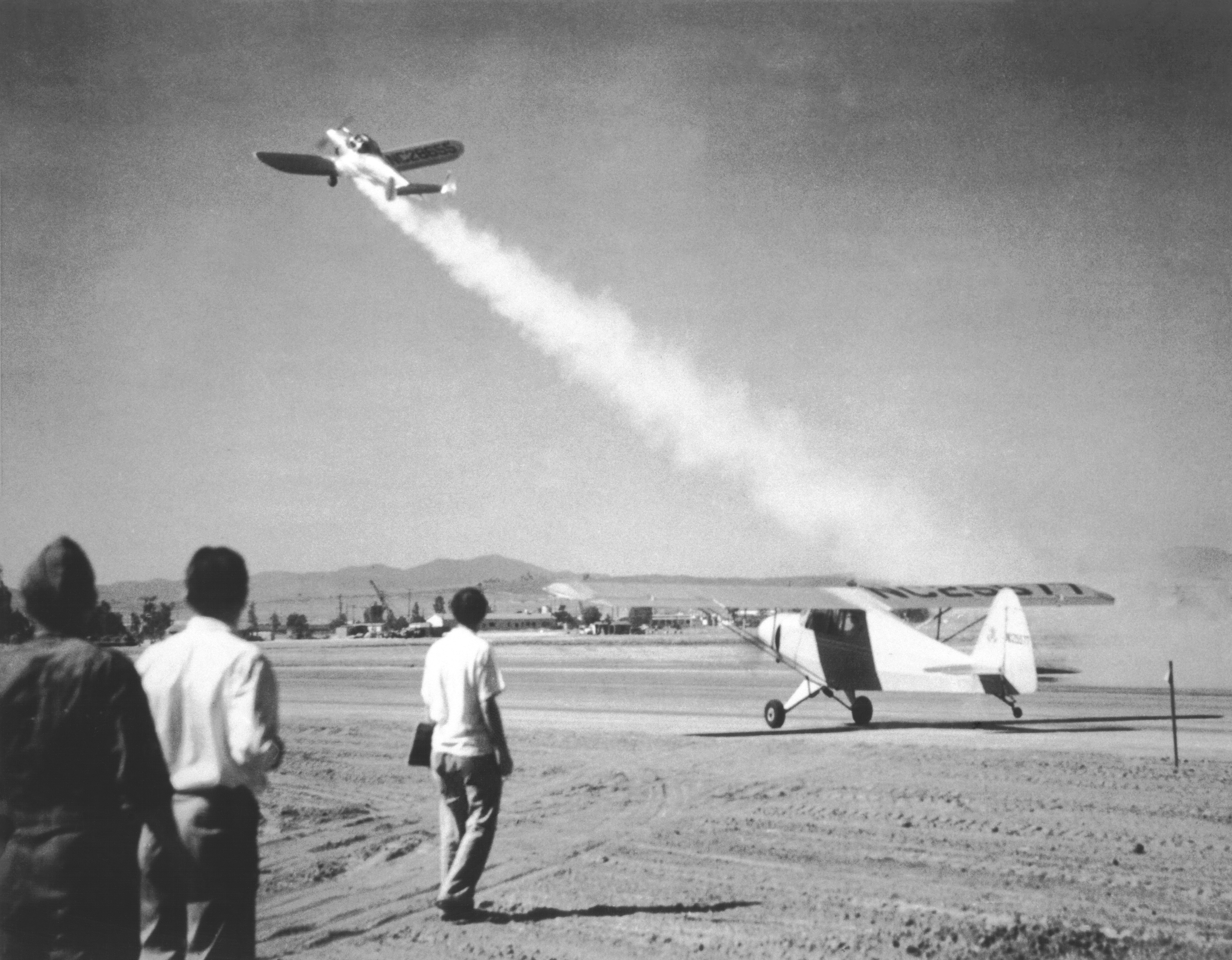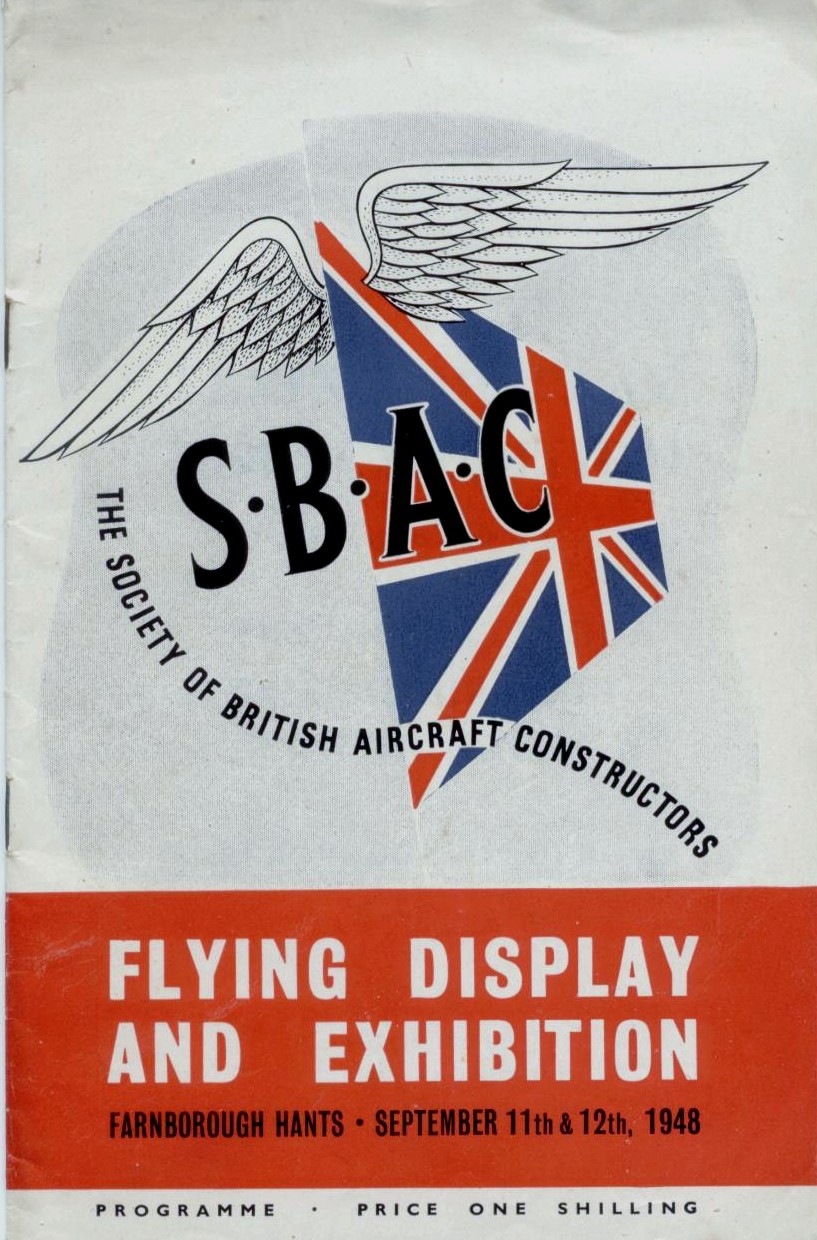|
SR.53
The Saunders-Roe SR.53 was a British prototype interceptor aircraft of mixed jet and rocket propulsion developed for the Royal Air Force (RAF) by Saunders-Roe in the early 1950s. As envisaged, the SR.53 would have been used as an interceptor aircraft, using its rocket propulsion to rapidly climb and approach incoming hostile bombers at high speeds; following its attack run, the aircraft would then return to its base using jet propulsion. Although the SR.53 proved to have promising performance during test flights, the requirement for such an aircraft had been overtaken by rapid advances in surface-to-air missile technology, leading to reconsideration of the aircraft's purpose. In July 1960, the development programme was formally cancelled, by which time a total of 56 test flights had been performed. A pair of prototype SR.53 aircraft had been completed and used during flight tests. The second prototype was destroyed during one such test flight in June 1958. The first prototype ... [...More Info...] [...Related Items...] OR: [Wikipedia] [Google] [Baidu] |
Saunders-Roe
Saunders-Roe Limited, also known as Saro, was a British aero- and marine-engineering company based at Columbine Works, East Cowes, Isle of Wight. History The name was adopted in 1929 after Alliott Verdon Roe (see Avro) and John Lord took a controlling interest in the aircraft and boat-builders S. E. Saunders. Prior to this (excepting for the Sopwith/Saunders Bat Boat) the products were Saunders, the A4 Medina for example dating from 1926. Sam Saunders the founder developed the Consuta material used in marine and aviation craft. The Saunders-Roe interest in aviation didn’t prevent the firm from continuing with the boatbuilding activities associated with S. E. Saunders Ltd Saunders Roe concentrated on producing flying-boats, but none were produced in very large quantities – the longest run being 31 Londons. They also produced hulls for the Blackburn Bluebird. During the Second World War Saro manufactured Supermarine Walrus and Supermarine Sea Otters. Their works ... [...More Info...] [...Related Items...] OR: [Wikipedia] [Google] [Baidu] |
Maurice Brennan
Maurice Joseph Brennan BSC, MIMechE, FRAes (April 1913 – 18 January 1986) was a British aerospace engineer. His career encompassed the design and development of flying boats before the Second World War to rocket powered fighters after. He had a significant role in Britain's first indigenous rocket project (Black Knight) and in the development of practical hovercraft ( SR.N1) Career Maurice Brennan was born in April 1913, at Muswell Hill, London. He was educated in Scotland, first at St. Mungo's Academy then at Glasgow University. He qualified for his pilots "A" licence in 1931. After graduating from Glasgow in April 1934, he joined the technical office of Hawker Aircraft, Ltd in Kingston, where he remained until 1936, when he went to work for Saunders-Roe. At Saunders-Roe he was engaged in the stress office, the aerodynamics office and the project office. In this period his design responsibilities included the Saro Lerwick and the Short Shetland flying boats. From 1947, h ... [...More Info...] [...Related Items...] OR: [Wikipedia] [Google] [Baidu] |
Saunders-Roe SR
Saunders-Roe Limited, also known as Saro, was a British aero- and marine-engineering company based at Columbine Works, East Cowes, Isle of Wight. History The name was adopted in 1929 after Alliott Verdon Roe (see Avro) and John Lord took a controlling interest in the aircraft and boat-builders S. E. Saunders. Prior to this (excepting for the Sopwith/Saunders Bat Boat) the products were Saunders, the A4 Medina for example dating from 1926. Sam Saunders the founder developed the Consuta material used in marine and aviation craft. The Saunders-Roe interest in aviation didn’t prevent the firm from continuing with the boatbuilding activities associated with S. E. Saunders Ltd Saunders Roe concentrated on producing flying-boats, but none were produced in very large quantities – the longest run being 31 Londons. They also produced hulls for the Blackburn Bluebird. During the Second World War Saro manufactured Supermarine Walrus and Supermarine Sea Otters. Their works ... [...More Info...] [...Related Items...] OR: [Wikipedia] [Google] [Baidu] |
Interceptor Aircraft
An interceptor aircraft, or simply interceptor, is a type of fighter aircraft designed specifically for the defensive interception role against an attacking enemy aircraft, particularly bombers and reconnaissance aircraft. Aircraft that are capable of being or are employed as both ‘standard’ air superiority fighters and as interceptors are sometimes known as fighter-interceptors. There are two general classes of interceptor: light fighters, designed for high performance over short range; and heavy fighters, which are intended to operate over longer ranges, in contested airspace and adverse meteorological conditions. While the second type was exemplified historically by specialized night fighter and all-weather interceptor designs, the integration of mid-air refueling, satellite navigation, on-board radar and beyond visual range (BVR) missile systems since the 1960s has allowed most frontline fighter designs to fill the roles once reserved for specialised night/all-wea ... [...More Info...] [...Related Items...] OR: [Wikipedia] [Google] [Baidu] |
High-test Peroxide
High-test peroxide (HTP) is a highly concentrated (85 to 98%) solution of hydrogen peroxide, with the remainder consisting predominantly of water. In contact with a catalyst, it decomposes into a high-temperature mixture of steam and oxygen, with no remaining liquid water. It was used as a propellant of HTP rockets and torpedoes, and has been used for high-performance vernier engines. Properties Hydrogen peroxide works best as a propellant in extremely high concentrations (roughly over 70%). Although any concentration of peroxide will generate some hot gas (oxygen plus some steam), at concentrations above approximately 67%, the heat of decomposing hydrogen peroxide becomes large enough to completely vaporize all the liquid at standard pressure. This represents a safety and utilization turning point, since decomposition of any concentration above this amount is capable of transforming the liquid entirely to heated gas (the higher the concentration, the hotter the resulting gas). Th ... [...More Info...] [...Related Items...] OR: [Wikipedia] [Google] [Baidu] |
JATO
JATO (acronym for jet-assisted take-off) is a type of assisted take-off for helping overloaded aircraft into the air by providing additional thrust in the form of small rockets. The term ''JATO'' is used interchangeably with the (more specific) term RATO, for ''rocket-assisted take-off'' (or, in RAF parlance, RATOG, for ''rocket-assisted take-off gear''). Early experiments and World War II In 1927 the Soviet research and development laboratory Gas Dynamics Laboratory developed solid-propellant rockets to assist aircraft take-off and in 1931 the world's first successful use of rockets to assist take-off of aircraft were carried out on a U-1, the Soviet designation for a Avro 504 trainer, which achieved about one hundred successful assisted takeoffs. Successful assisted takeoffs were also achieved on the Tupolev TB-1. and Tupolev TB-3 Heavy Bombers. The official test of the Tupolev TB-1 in 1933 shortened the takeoff by 77% when using the rockets. Early experiments using ... [...More Info...] [...Related Items...] OR: [Wikipedia] [Google] [Baidu] |
Rocket Motor
A rocket engine uses stored rocket propellants as the reaction mass for forming a high-speed propulsive jet of fluid, usually high-temperature gas. Rocket engines are reaction engines, producing thrust by ejecting mass rearward, in accordance with Newton's third law. Most rocket engines use the combustion of reactive chemicals to supply the necessary energy, but non-combusting forms such as cold gas thrusters and nuclear thermal rockets also exist. Vehicles propelled by rocket engines are commonly called rockets. Rocket vehicles carry their own oxidiser, unlike most combustion engines, so rocket engines can be used in a vacuum to propel spacecraft and ballistic missiles. Compared to other types of jet engine, rocket engines are the lightest and have the highest thrust, but are the least propellant-efficient (they have the lowest specific impulse). The ideal exhaust is hydrogen, the lightest of all elements, but chemical rockets produce a mix of heavier species, reducing ... [...More Info...] [...Related Items...] OR: [Wikipedia] [Google] [Baidu] |
De Havilland Sprite
The de Havilland Sprite is a British rocket engine that was built by de Havilland in the early-1950s for use in RATO (Rocket-assisted take off) applications. A developed engine with slightly less thrust but a longer burn time was known as the Super Sprite, production ceased in October 1960. Design and development For RATO use only a short burn time is required, with simplicity and light weight as major virtues. The intended market was for assisting take-off of de Havilland Comet 1 airliners (as hot and high operations in the British Empire were considered important) and also for V bombers carrying heavy nuclear weapons. 30 successful test flights were carried out by Comets, from May 1951, but gas turbine performance improved rapidly, and so RATO was not required in service. A hydrogen peroxide monopropellant was used, decomposed into oxygen and steam over a metallic calcium catalyst. The maximum thrust was , varying over the 16 second burn time for a total impulse of 55,000 ... [...More Info...] [...Related Items...] OR: [Wikipedia] [Google] [Baidu] |
Armstrong Siddeley Snarler
The Armstrong Siddeley Snarler was a small rocket engine used for mixed-power experiments with an early turbojet engine. and was the first British liquid-fuelled rocket engine to fly. Design and development Unlike other British rocket engine projects that used hydrogen peroxide as an oxidiser, Armstrong Siddeley's used liquid oxygen. The rocket engine is described as having a dry weight of thrust of and a specific fuel consumption of 20 (lb/h)/lbf thrust. Work began in 1947 and the final configuration was first tested on 29 March 1950. The prototype of the Hawker P.1040 Sea Hawk, ''VP 401'', had a Snarler rocket of 2,000 lbf thrust added in its tail. The Rolls-Royce Nene turbojet, of 5,200 lbf thrust, had a split tailpipe which exhausted either side of the fuselage. The combination was termed the Hawker P.1072. This gave approximatelyAlthough the Nene's thrust, as for any turbojet, fell with increasing altitude the Snarler's remained constant. 50% grea ... [...More Info...] [...Related Items...] OR: [Wikipedia] [Google] [Baidu] |
Farnborough Air Show
The Farnborough Airshow, officially the Farnborough International Airshow, is a trade exhibition for the aerospace and defence industries, where civilian and military aircraft are demonstrated to potential customers and investors. Since its first show in 1948, Farnborough has seen the debut of many famous planes, including the Vickers VC10, Concorde, the Eurofighter, the Airbus A380, and the Lockheed Martin F-35 Lightning II. At the 1958 show, the RAF's Black Arrows executed a 22-plane formation loop, setting a world record. The international trade show is put together every two years by FIL Farnborough International Ltd. and runs for five days. Until 2020, the show ran for a full week with trade visitors attending on the first five days and the weekend reserved for the general public. Programming takes place at the Farnborough Airport, which lies roughly 50 kilometres south-west of London. Status The Farnborough International Airshow is the second-largest show of its kind ... [...More Info...] [...Related Items...] OR: [Wikipedia] [Google] [Baidu] |
Monopropellant
Monopropellants are propellants consisting of chemicals that release energy through exothermic chemical decomposition. The molecular bond energy of the monopropellant is released usually through use of a catalyst. This can be contrasted with bipropellants that release energy through the chemical reaction between an oxidizer and a fuel. While stable under defined storage conditions, monopropellants decompose very rapidly under certain other conditions to produce a large volume of its own energetic (hot) gases for the performance of mechanical work. Although solid deflagrants such as nitrocellulose, the most commonly used propellant in firearms, could be thought of as monopropellants, the term is usually reserved for liquids in engineering literature. Uses The most common use of monopropellants is in low-impulse monopropellant rocket motors, such as reaction control thrusters, the usual propellant being hydrazine, p. 230 which is generally decomposed by exposure to an iridium ... [...More Info...] [...Related Items...] OR: [Wikipedia] [Google] [Baidu] |
Methanol
Methanol (also called methyl alcohol and wood spirit, amongst other names) is an organic chemical and the simplest aliphatic alcohol, with the formula C H3 O H (a methyl group linked to a hydroxyl group, often abbreviated as MeOH). It is a light, volatile, colourless, flammable liquid with a distinctive alcoholic odour similar to that of ethanol (potable alcohol). A polar solvent, methanol acquired the name wood alcohol because it was once produced chiefly by the destructive distillation of wood. Today, methanol is mainly produced industrially by hydrogenation of carbon monoxide. Methanol consists of a methyl group linked to a polar hydroxyl group. With more than 20 million tons produced annually, it is used as a precursor to other commodity chemicals, including formaldehyde, acetic acid, methyl tert-butyl ether, methyl benzoate, anisole, peroxyacids, as well as a host of more specialised chemicals. Occurrence Small amounts of methanol are present in normal, healthy ... [...More Info...] [...Related Items...] OR: [Wikipedia] [Google] [Baidu] |



.jpg)



